We value your privacy!
We use cookies on our website to offer you the best experience. By clicking "accept & close", you agree to the use of all cookies according to our and our . If you do not make a selection, our default cookie settings will be applied. You can change your settings at any time.
Essential cookies: They are required for the proper functioning of the website. First-party- und third-party-cookies: They are optional and are set by us or our subcontractors. Session and persistent cookies: Are automatically deleted when the browser is closed. Persistent cookies are cookies that remain on your computer/device for a certain period of time after the browser is closed.
What is the qualified electronic signature in Europe (Update 2024)
Updated on 20.06.2024
What is a qualified electronic signature?
The qualified electronic signature, often referred to as QES, is a type of electronic signature that is equivalent to a handwritten signature under the eIDAS Regulation (EU Regulation No. 910/2014).
It provides a legally valid and forgery-proof way to sign digital documents across borders and ensure the integrity and authenticity of the signer's identity.
Unlike simple electronic signatures, which are based on image or text and can be easily forged, a QES is considered tamper-proof. It is issued by a qualified certification authority and uses cryptographic techniques to confirm the identity of the signer and protect the signed document from subsequent modification.
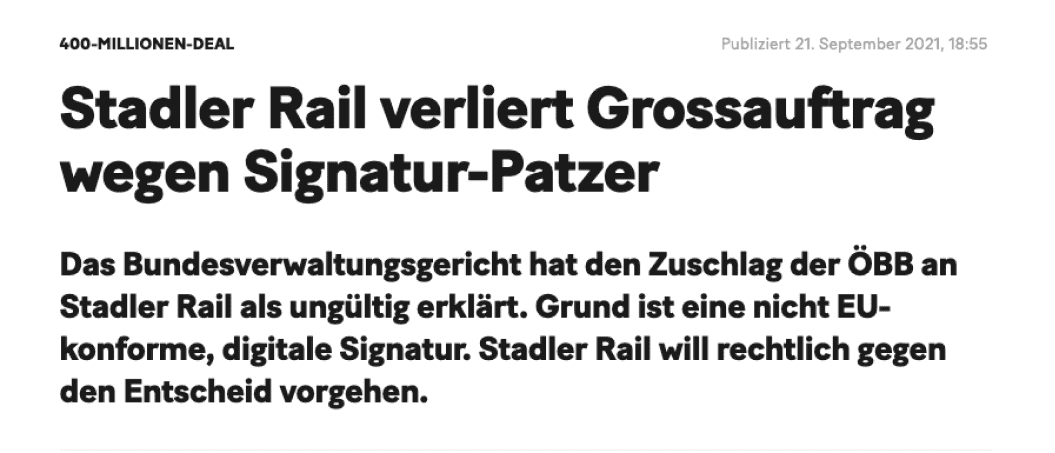
Source: https://u.sproof.io/eshtY
Caution is advised. Especially contracts with high liability risk or high negotiation value should definitely be signed qualified electronically!
In 2021, an order placed by ÖBB with Stadler Rail in the amount of an estimated 400 million euros was declared invalid by the Federal Administrative Court. The reason. The signature was not qualified in the sense of the eIDAS regulation and therefore not legally valid. The most spectacular case to date.
How does the qualified electronic signature work?
The qualified electronic signature essentially works like a digital seal of approval.
When a document is signed electronically with a QES, a unique digital fingerprint is created that is 100% unique and tamper-proof to both the document and you as the signer:in.
This fingerprint is attached to the document in encrypted form along with your other data.
Any tampering with the document after signing will result in an invalid signature.
But don't worry: the technical encryption runs invisibly for you in the background.
Would you like to know in detail how a qualified electronic signature works technically? Then we recommend our article: How does the qualified electronic signature work?
How does the qualified electronic signature work in the application?
Step 1: Identification with a trust service provider (if an eID is not yet available):
With many signature platforms (such as sproof sign), identification for the QES is included in the service offering.

Source: sproof
Step 2: Apply the digital signature card to the document to be signed:
Upload the document to be signed and match your digital signature card.
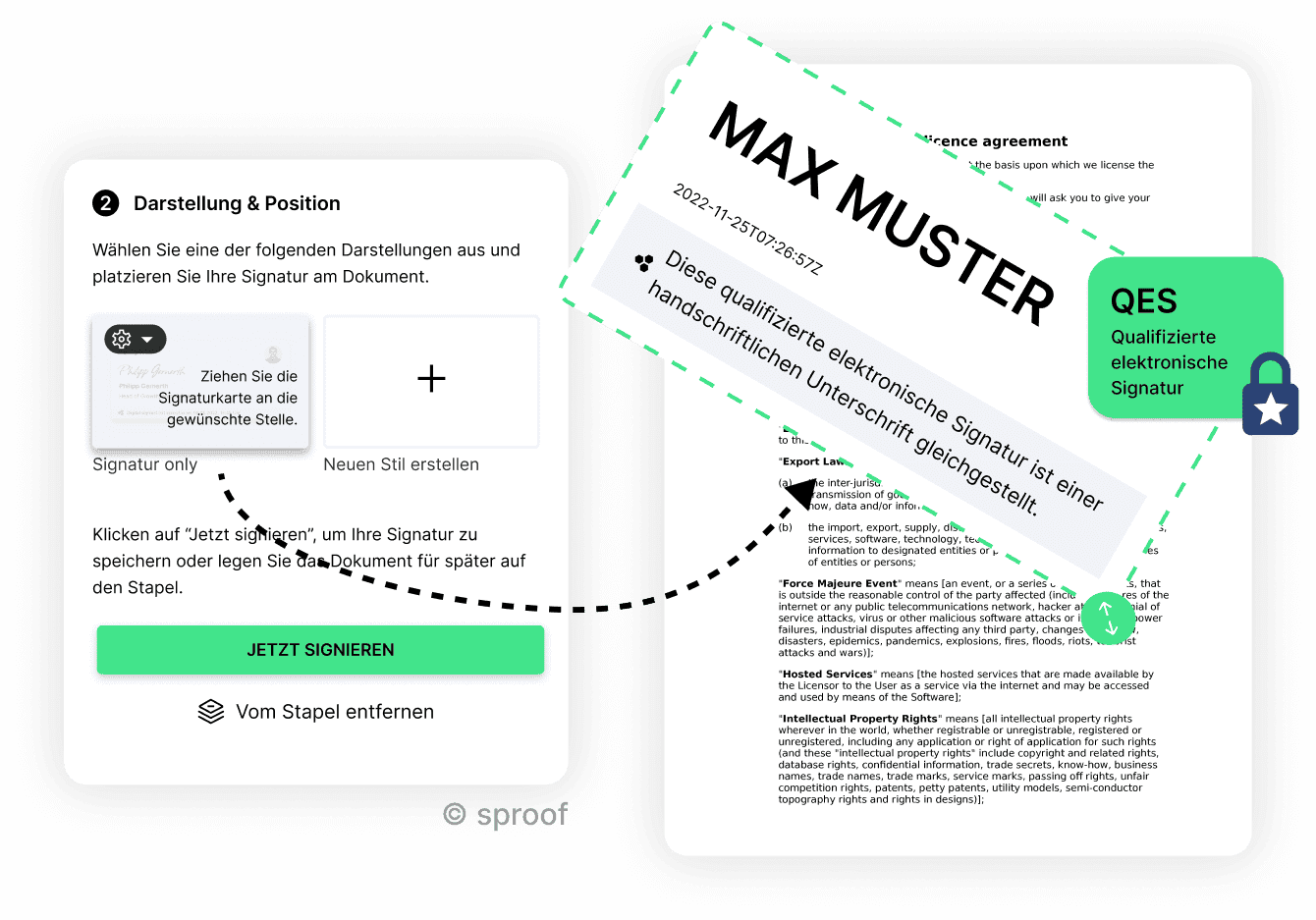
Step 3: Authentication:
Release the qualified signature with your second confirmation factor. This often works with an additional app, or an SMS tan. You may be familiar with this from online banking.
With the identification you create your digital identity once (valid for 5 years). You receive your access data to an app with which you can authenticate each signature.
How to get a qualified electronic signature? Your identification in just a few minutes.
Any natural person can easily obtain a qualified electronic signature by identifying themselves to a state-recognized body. In doing so, your so-called digital identity, also called eID or eIdentity, is created.
In the process, your biometric and personal data are uniquely linked to your person.
With a signature platform such as sproof sign, identification can take place directly via video call and takes about 10 minutes. It is performed by trained personnel. You only need your
You receive your digital key, which you can use from now on to carry out important digital processes such as signing documents electronically.
You protect yourself against identity misuse and identity theft on the Internet!
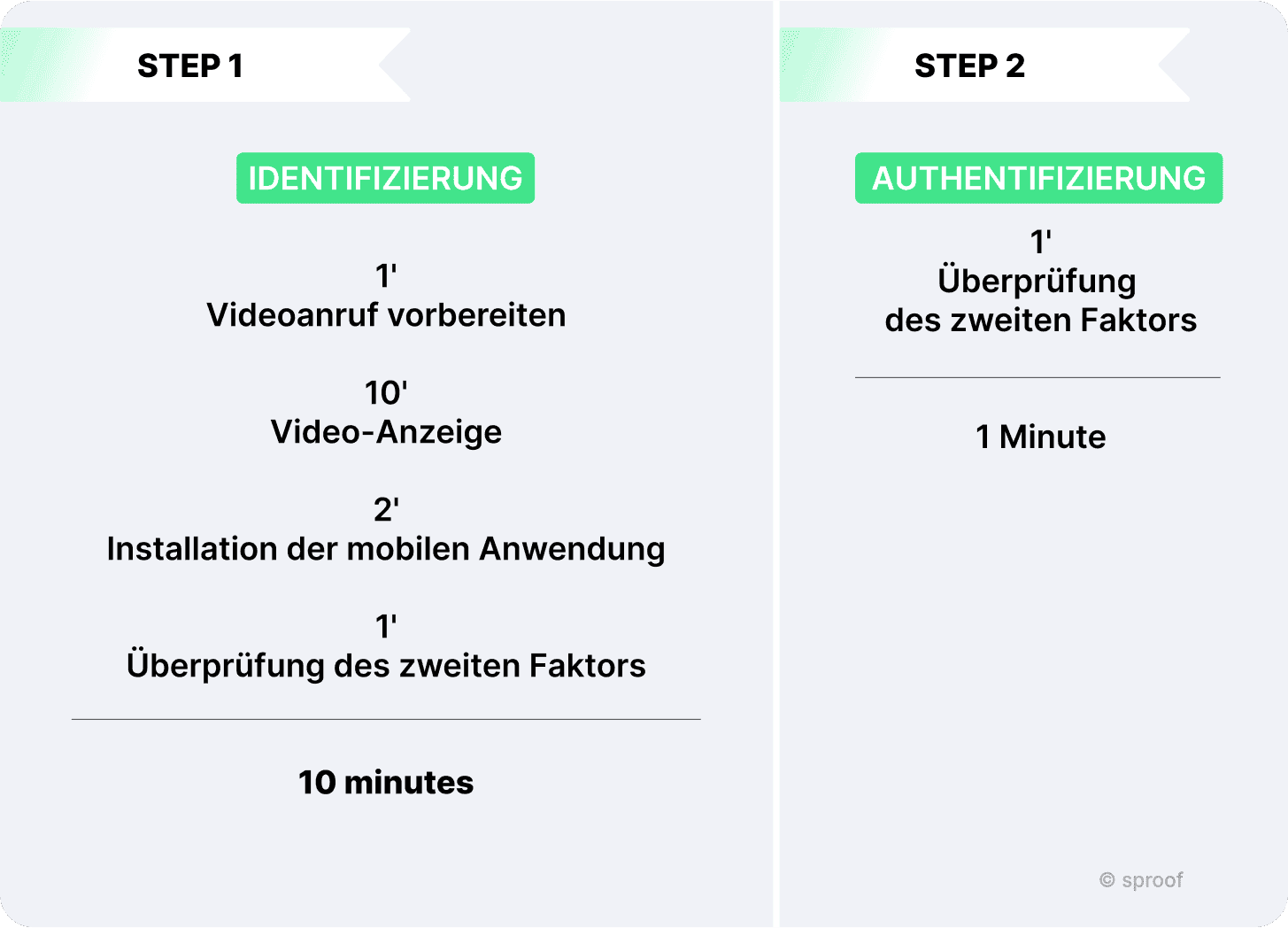
Many German citizens already have an identification with D-Trust and many Austrian citizens have a cell phone signature or ID-Austria. With sproof sign, existing identifications can be used directly for QES.
Europe has a great interest in enabling business processes across the board through a secure digital identity. That is why there are many different governmental and non-governmental providers of trust services. Read more in this fundamental study .
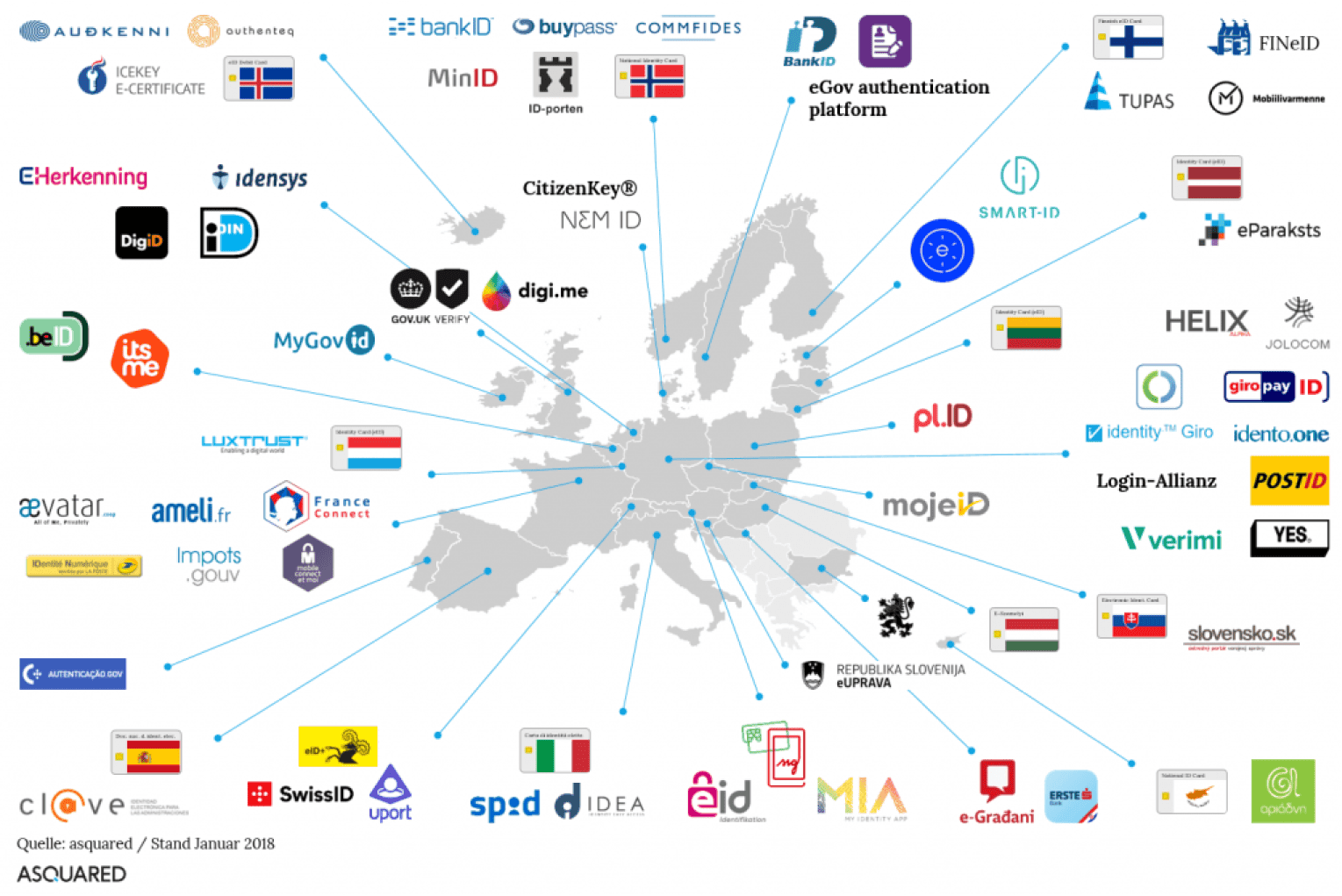
sproof sign has already directly integrated many of the most important European e-ID providers thanks to a special interface. You can find an overview here →
Does QES make sense in your business?. Talk to our experts -->
Legal foundations of the qualified electronic signature
Qualified electronic signatures are regulated throughout Europe by the eIDAS Regulation (No. 910/2014), which provides a standardized legal framework throughout the European Union.
This regulation ensures the interoperability of electronic signatures and guarantees their legal recognition.
As mentioned above, QES uses advanced encryption and authentication measures to ensure the integrity and confidentiality of signed documents.
QES as an alternative to other digital signature standards.
In Europe, a basic distinction is made between three valid standards for electronic signatures.
Electronic signatures (QES, AES and EES) have different legal validity depending on the type of contract and the law.
EES is used for low risk and is suitable for formless documents. Legally, this form is not binding.
The AES applies to form-free contracts such as rental or purchase agreements.
The qualified electronic signature (QES) strengthens contracts and fulfills written form requirements, e.g., for credit or employment contracts with a competition clause.
When is the qualified electronic signature required?
In principle, the qualified electronic signature is always required when:
1. national law requires the written form:
the qualified electronic signature offers the possibility of completely replacing the handwritten signature.
2. operational or business risks exist:
in addition to the legal requirements, the decision in favor of a particular digital signature standard depends on an individual assessment of possible risks, which in turn is made depending on liability considerations and the scope of the contract.
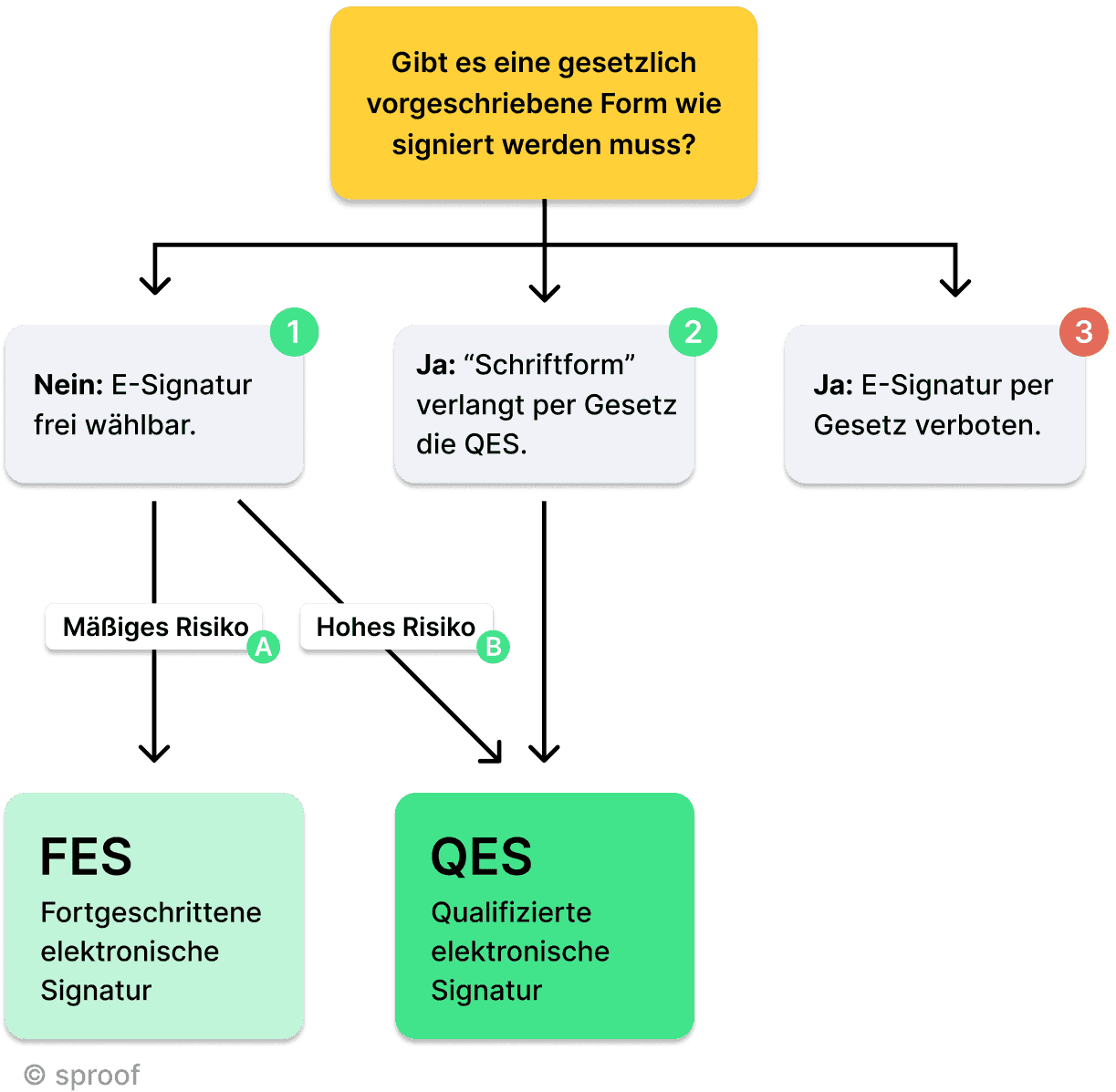
Decision support: Which e-signature standard is right for which document?
1A. Moderate risk + freedom from form:
In principle, you decide for yourself which e-signature standard you want to use to sign if a contract complies with "freedom from form". We always recommend signing with at least the advanced electronic signature (AES) to achieve a good medium level of security and bindingness. The contract is thus legally signed.
1B: High risk + freedom of form:
Attention: You can sign the contract practically any way you want, but for contracts with a high liability risk we recommend the qualified electronic signature! Only the QES is equated to the handwritten signature by EU-wide law.
2: Written form:
For certain contracts, the QES is required by law and there is no leeway as to which e-signature standard you can choose.
3: E-signature excluded:
A rarity: there are very few contracts where you still have to sign by hand by law. Here, too, QES cannot be used. Our opinion: It is only a matter of time before the laws are adapted in such a way that, in the interests of the environment and the economy, all documents can be signed electronically without exception.
We have summarized the legal requirements and framework conditions in detail in this article .
Which industries is QES suitable for?
The qualified electronic signature is a fundamental requirement for some industries, such as the legal and tax industry, public administration or banking and finance, but also the healthcare industry, for the necessary bindingness of decisions made.
Here are some well-known sproof sign customers with the highest security & compliance requirements talking about their use cases with the qualified signature:
Bank Gutmann
(banking)
Binder Grösswang
(law firm)
Kyocera
(enterprise)
Federal Accounting Agency
(public administration)
Teleclinic
(healthcare).
How do I recognize a qualified electronic signature? Verifiability and verification.
There are several ways to verify the validity of the applied signatures (your own but also those of the obtained signatures).
1. checking the validity of the QES directly with the e-signature tool.
With some platforms, such as sproof sign, signature verification is directly integrated. This allows the following quality criteria of a qualified electronic signature to be checked directly. Here you can see how to validate e-signatures directly in sproof sign.
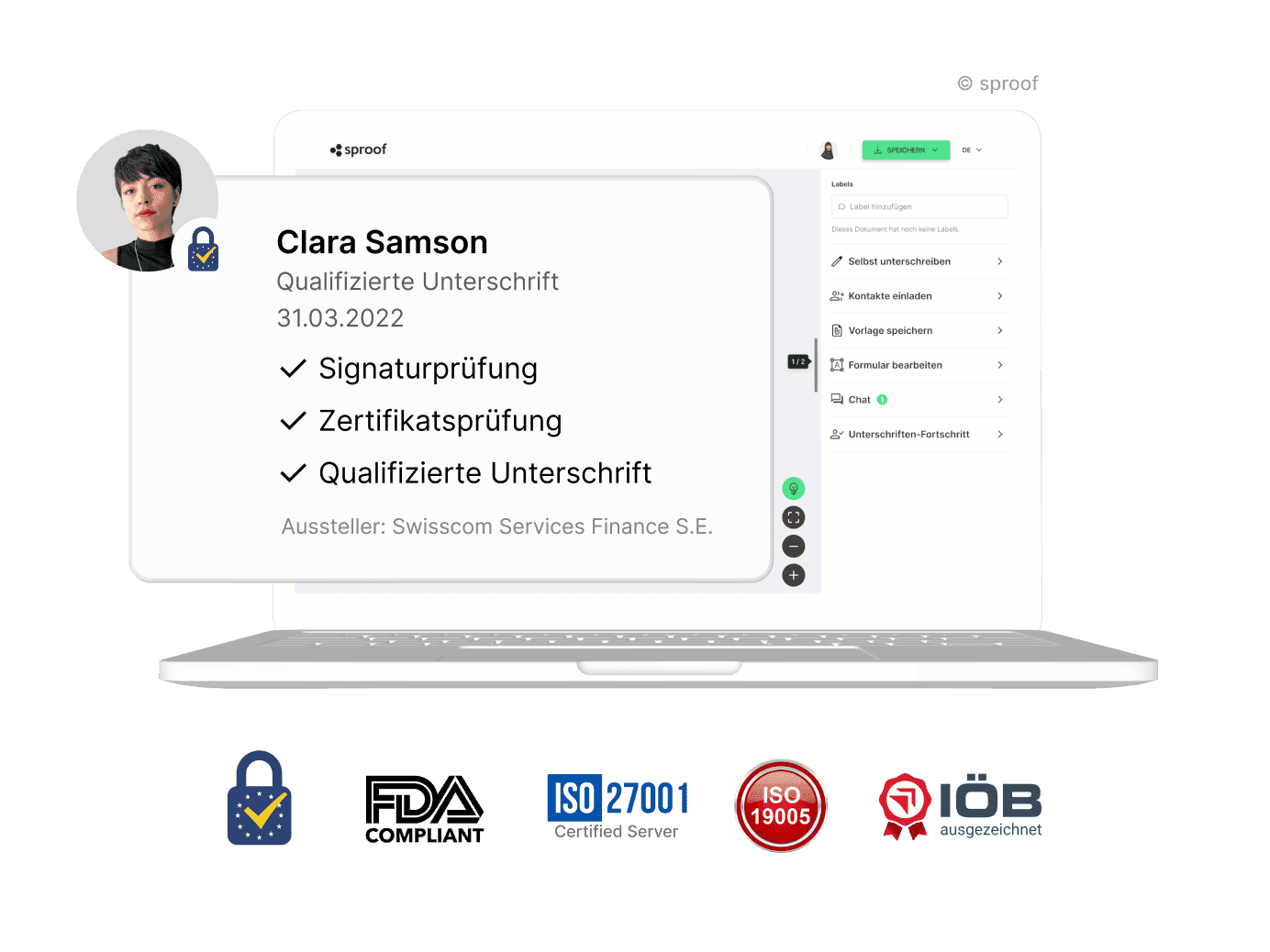
Certificate from a trust service provider: The signature is based on a certificate issued by a recognized trust service provider. This certificate confirms the identity of the signer and the validity of the signature.
Verification seal and time stamp: The signature is often accompanied by a verification seal that contains further information about the signature. A timestamp indicates when the signature was created.
Visible characters: In some cases, the qualified electronic signature may be visually indicated in the document, for example, by a special signature field.
Reference to legal regulations: In the document or in the accompanying communication, reference is made to the legal recognition of the qualified electronic signature according to the relevant laws and regulations.
2. check QES in Acrobat Reader
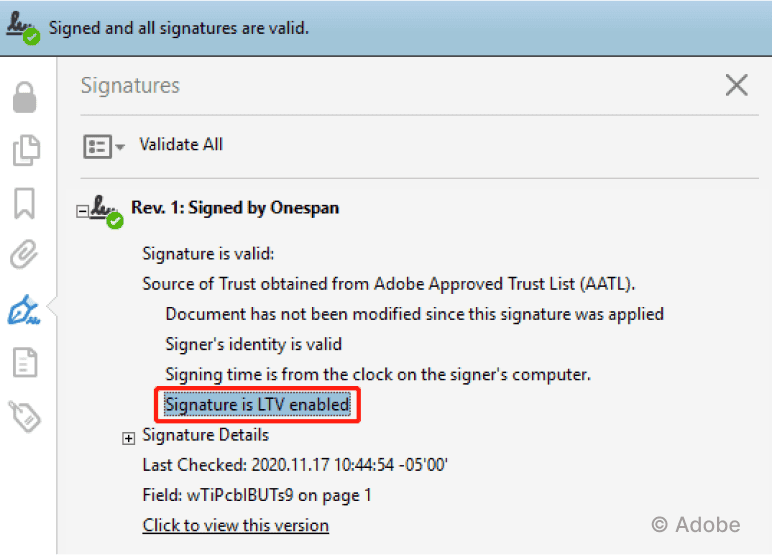
Acrobat's pdf. reader is probably one of the most widely used office tools on the market. Of course, Acrobat Reader allows a directly integrated verification of digitally applied signatures. It does not matter which signature tool you have used to apply your electronic signatures.
.3. Testing of the QES at RTR
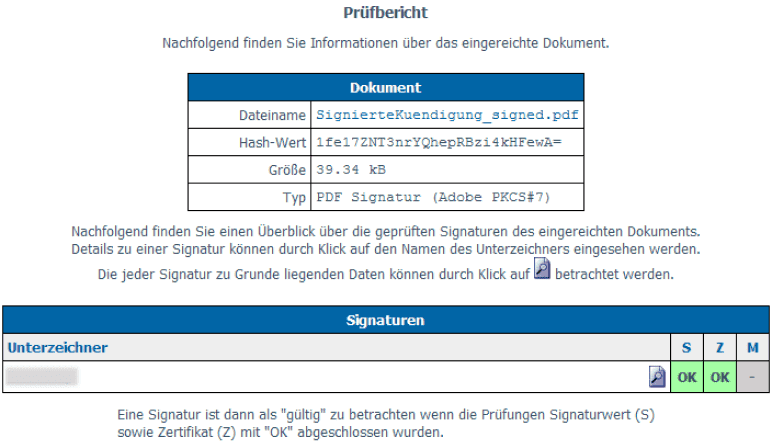
RTR's signature verification service is also well established in the German-speaking world.
.Advantages of the qualified signature for European companies
Integrating qualified electronic signatures into your business processes is easy. User-friendly signature platforms from a single source specialize in both the creation and management of digital signatures. You can securely sign internal as well as external contracts online and share them with customers, partners, and regulators.
1. enhanced security:
QES provides a high level of security and minimizes the risk of forgery or unauthorized access.
2. legally binding:
documents signed with a QES have the same legal status as their paper counterparts and are therefore enforceable.
3. time and cost savings:
say goodbye to printing, scanning and mailing documents. QES speeds up processes and lowers operating costs.
We would be happy to calculate the return on investment for the introduction of a digital signature platform with you. Learn more now ->
4. environmental impact:
The introduction of QES contributes to a paperless operation and reduces your ecological footprint. According to a recent, unpublished study by [Swisscom Trust Services AG](<
https://trustservices.swisscom.com/de/produkte/elektronische-signatur/signing-service
), digital signatures generate only 0.001kg of CO2 per contract. Compared to the wet signature (0.087kg CO2 per contract), the total climate-damaging emissions can be reduced by a factor of 50.
5. global recognition:
QES is recognized throughout the European Union and in many other countries, which simplifies cross-border transactions.
5 Crucial questions when selecting a (QES) signature platform
European e-signature platforms have mostly specialized in qualified electronic signatures. For more bindingness & security in critical decisions in the European legal area.

The decision-makers in your company should ask themselves these questions when it comes to introducing the qualified electronic signature.
1. Is the QES identification included in the license?
A simple identification option ensures a smooth start with the qualified signature. sproof sign works with reliable partners and offers its own qualified electronic signature directly in the application.
The eID provider is deeply integrated, enabling many important power features such as legally valid signing of multiple documents with just a few clicks (batch signature).
2. Are other eID providers integrated?
When a sensitive document needs to be qualified by business partner:s, it is a huge time saver to have existing identifiers at trust service providers such as ID Austria, D-Trust or Swisscom's QES directly available for selection.
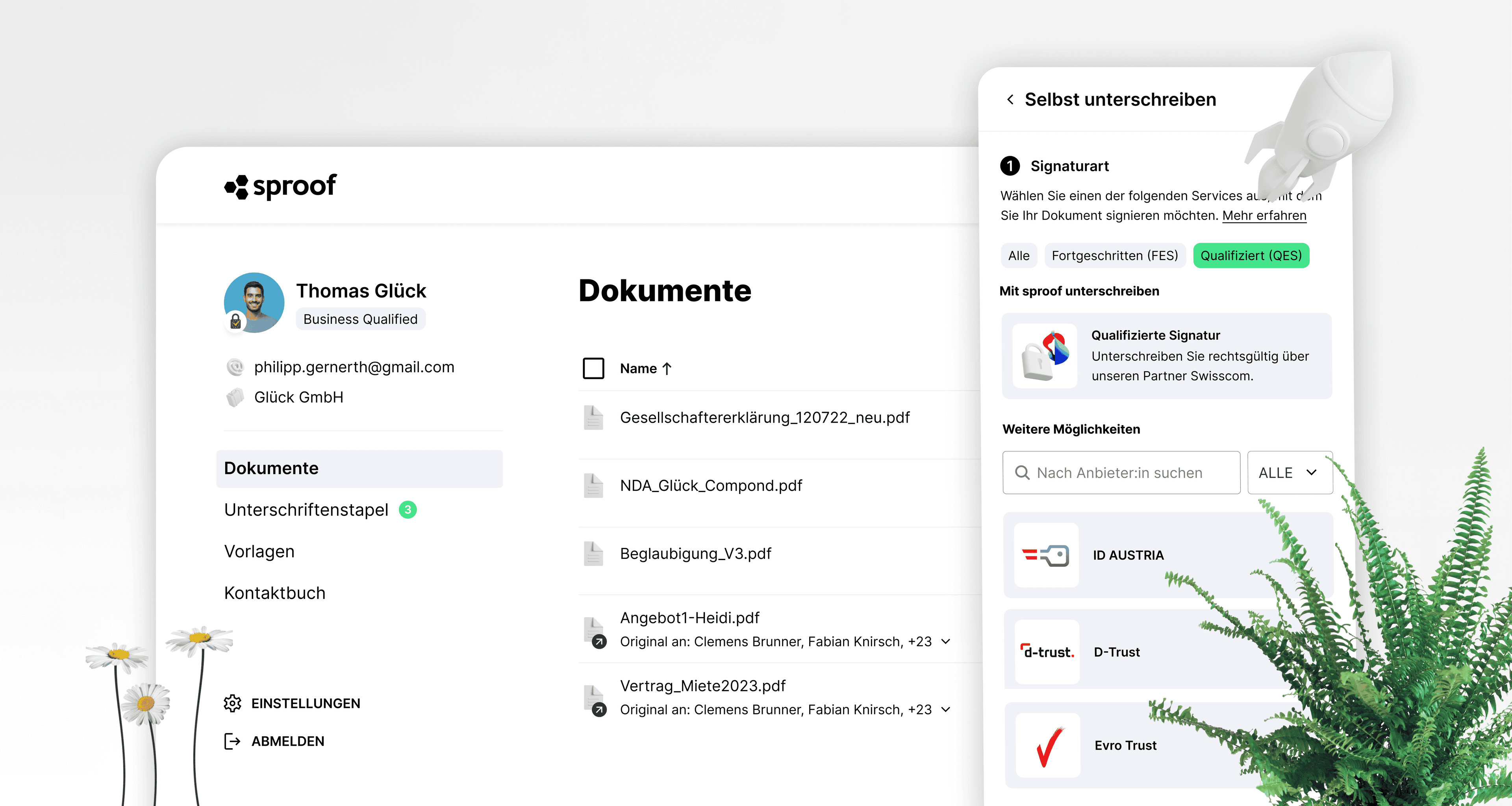
3. Can team members be optionally equipped with QES?
It should be possible for the administrator of a plan to equip team members with identification plus qualified electronic signature as required. sproof sign is particularly flexible here and rights management is possible directly in the platform.

4. Is QES signature verification directly integrated?
It saves you a lot of time if you and your plan members can directly check the validity of issued and obtained signatures for legal validity.
5. Is it possible to download an audit report?
Once the signing and approval process is complete, an audit report enables maximum transparency.
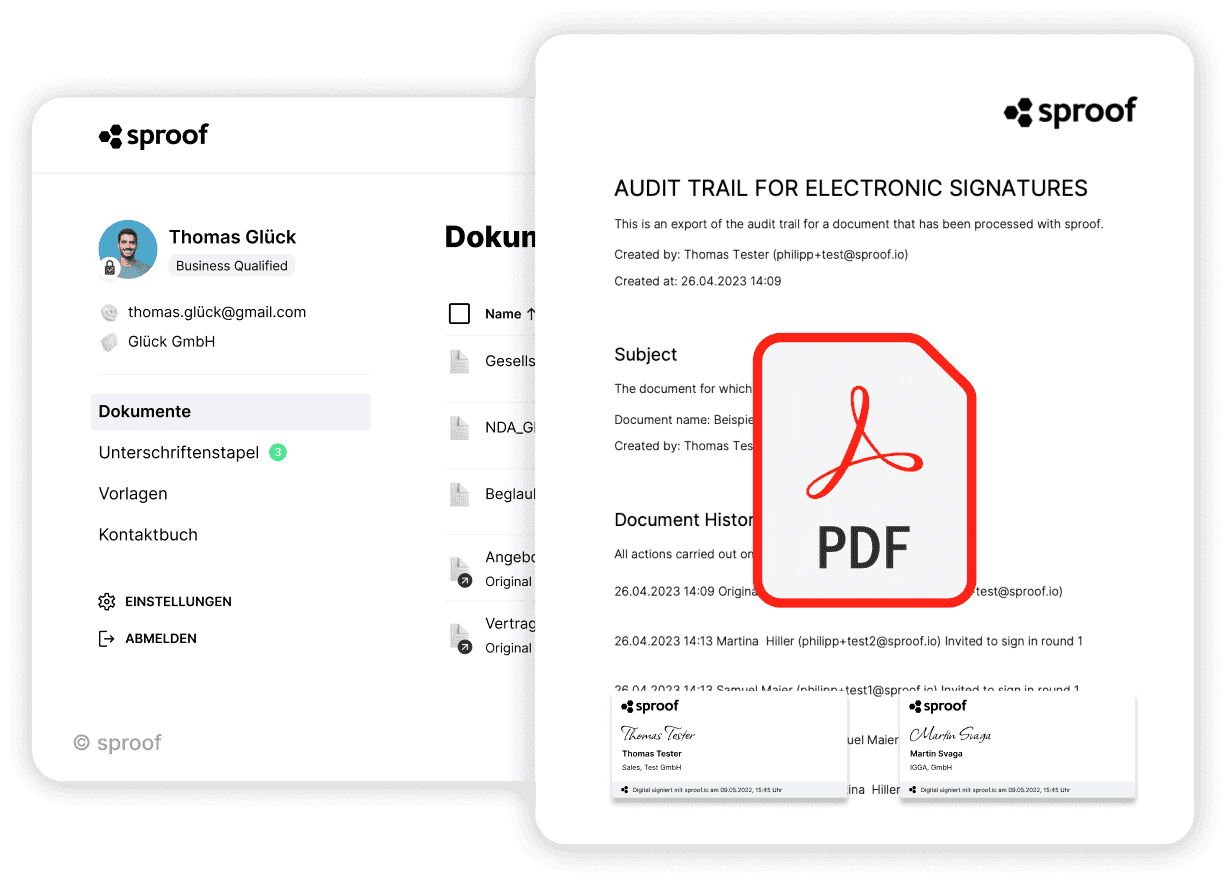
Conclusion: It's time. Sign your documents legally with the qualified electronic signature.
In a world dominated by digitization, qualified electronic signatures are a sign of technological progress and legal innovation.
As you embark on your journey into the world of qualified electronic signatures, remember that adopting this transformative technology is not only a step toward efficiency, but also a commitment to a more sustainable and environmentally friendly future.
More blog entries
Success Story PÖTTINGERInnovative solutions for a sustainable future: the partnership between sproof sign and Energie AG OberösterreichState-of-the-art security and data protection: PMU relies on sproof signHow to sign your contracts digitally & guaranteed legally validQES, AES, SES: Overview of all e-signature-standards

